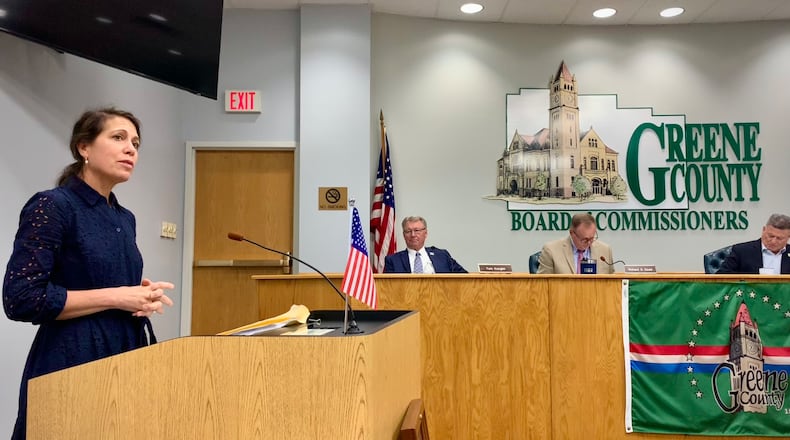Part of that plan calls for a $23 million judicial center that would house the vast majority of Greene County’s court operations.
Four out of five Greene County judges opposed the change, saying it created several key problems for court operations, and commissioners met with the judges Thursday to discuss these issues.
At that meeting, Juvenile Court Judge Amy Lewis said she first heard of the draft master plan on Sept. 5., saying it came as a surprise to her and the other judges. She said communication from consulting firm Woolpert, which spearheaded the project, was sporadic after the initial interview with department heads.
The company’s initial list of questions, Lewis said, “addressed buildings. Not people.”
Lewis laid out seven main concerns that the judges shared, the biggest of these being the demolition of the Juvenile Court’s Assessment and Intervention Center.
Greene County’s assessment center is considered the gold standard in the state of Ohio, Lewis said.
“In fact, the Department of Youth Services refers other counties to our assessment center to look at our operation,” she said.
The center is “an in-house intervention program for high-risk youth as an alternative to detention,” Lewis said. Located out in the countryside outside Xenia, the center has a greenhouse where children are able to grow flowers and vegetables, which are donated to local pantries, and trained therapists and intervention specialists who are able to give individualized guidance and counseling to children interacting with the court system.
Nearly 80% of children who pass through its doors are exposed to some kind of childhood trauma, ranging from domestic violence and overdose in the household, to witnessing the arrest of a parent, or experiencing the death of a family member due to violence, Lewis said.
Under the draft plan, the assessment center would be demolished, and moved into the same building with other juvenile court operations.
Not only would this be a waste of about half a million dollars that the juvenile court spent on improvements to the center, it would be against best practices for the children, Lewis said.
“The assessment center is (used) to engage with families so we can provide individualized services and resources,” Lewis said. “The center should never be in a court building, and under the model, we’ll have to figure out different funding sources.”
The judges’ other concerns included children coming into contact with adult offenders, transporting kids from the current detention center to the proposed Justice Center, and separating probation from court operations.
Greene County Common Pleas Court Judge Mike Buckwalter said that the last of these is particularly key in his court.
“When you’re running a general division which has a heavy, heavy docket on criminal cases, you have to have the probation department as your right arm,” he said. “It won’t work by phone, it won’t work by Zoom.”
Finally, Buckwalter said, the judges who work in the Greene County Courthouse, a building he termed the “crown jewel of Greene County,” simply don’t want to move.
“If it’s not broken, don’t fix it,” he said. “I think moving four judges, who don’t want to be moved, out of excellent facilities that get the job done for a price tag to the Greene County taxpayers…I just hope you really think hard about it.”
The Greene County commissioners said Thursday there will be more conversations before they vote on the plan. The Facilities Master Plan is expected to go before the commissioners in November.
About the Author

